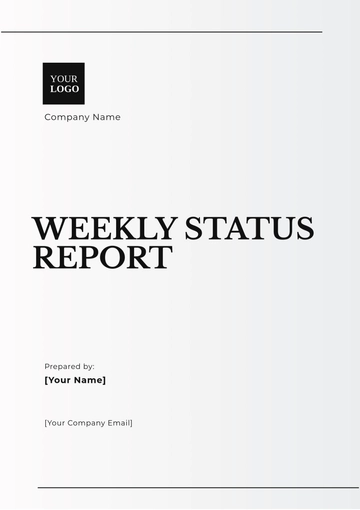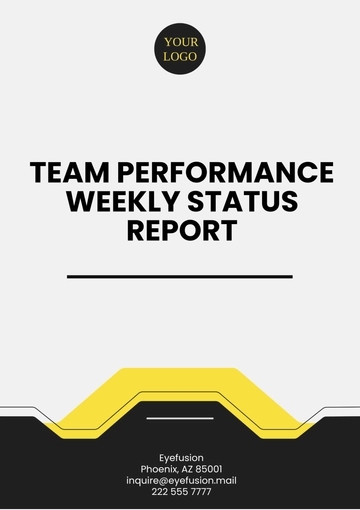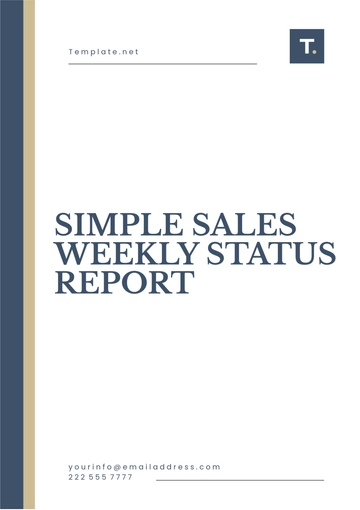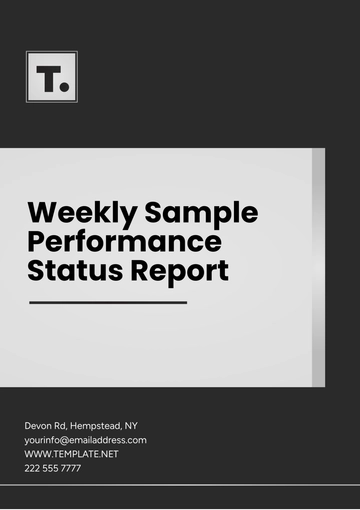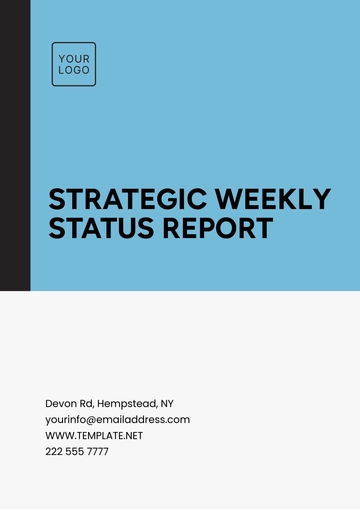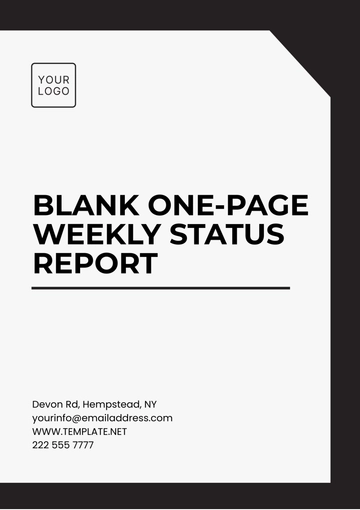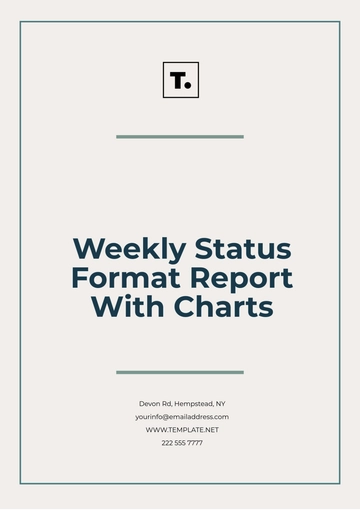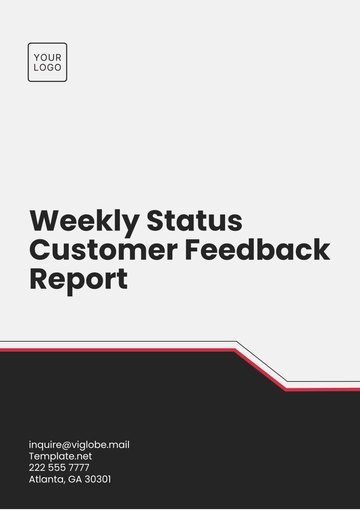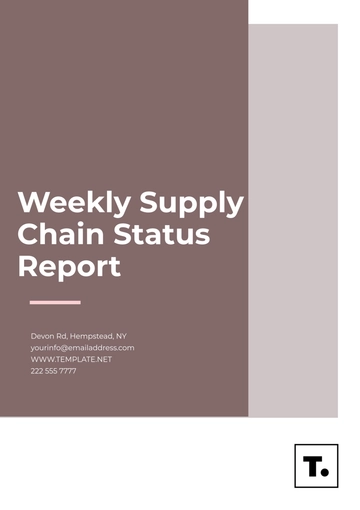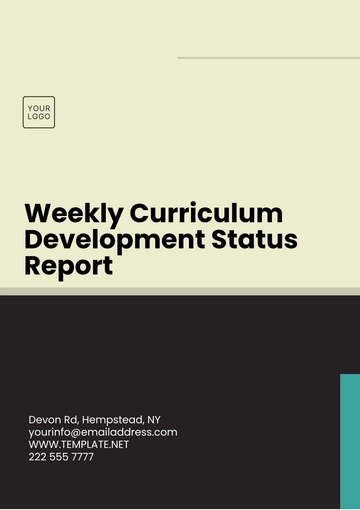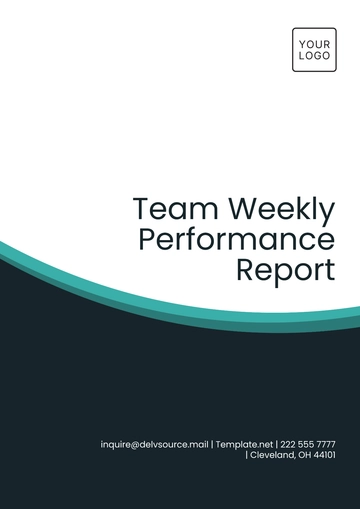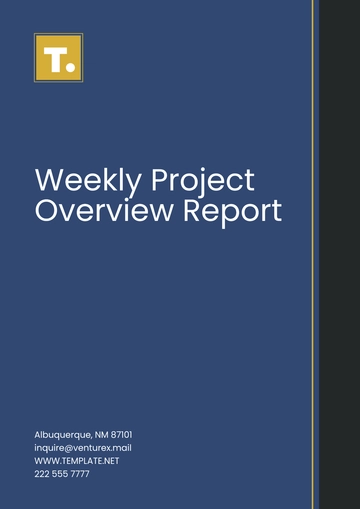Free Bi Weekly Report
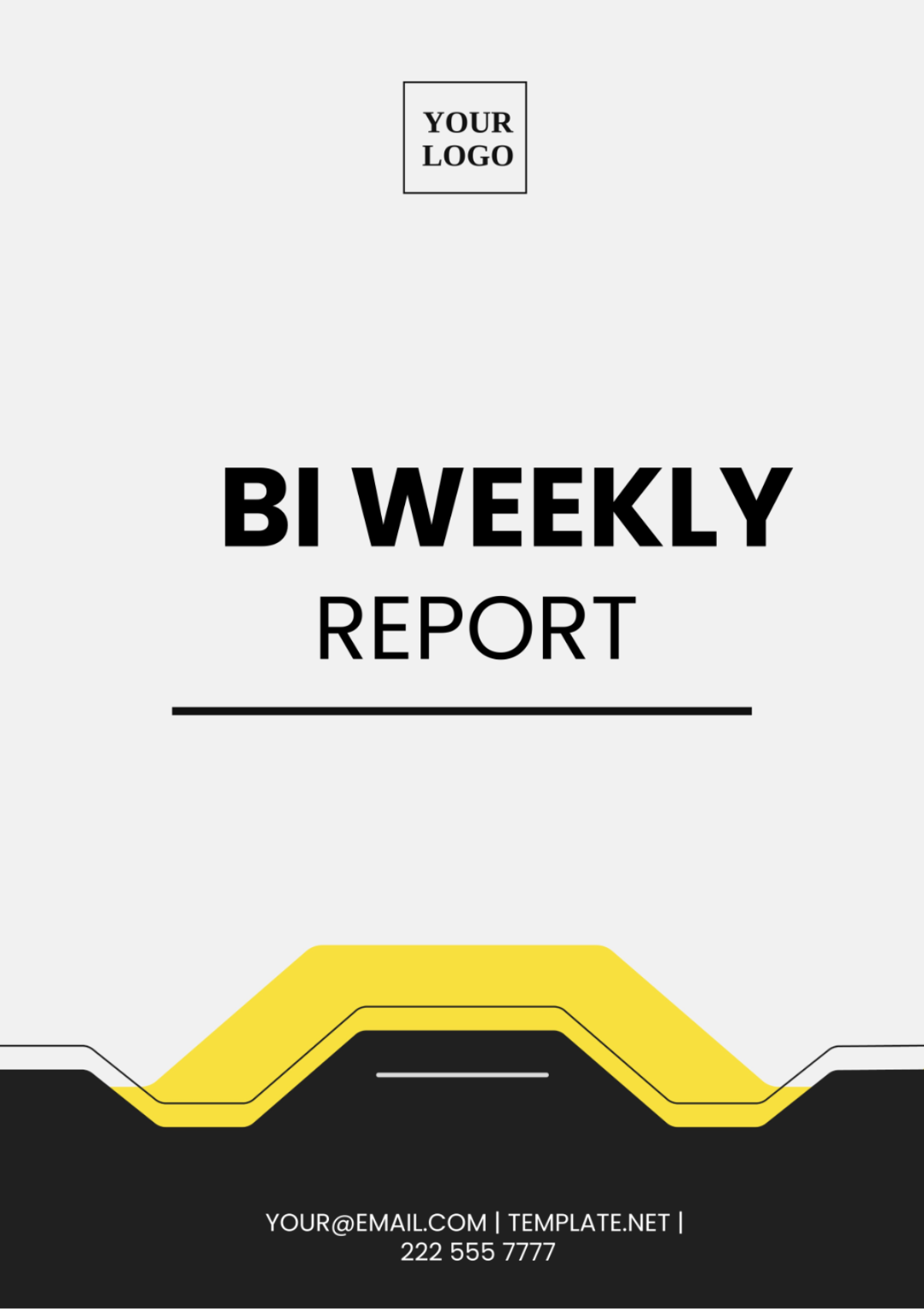
Prepared by: [YOUR NAME]
Department: [YOUR DEPARTMENT]
Date: [REPORT DATE]
I. Executive Summary
This section provides a high-level overview of the key findings and developments over the past two weeks at [YOUR COMPANY NAME]. This summary aims to furnish stakeholders with quick insights into the status of ongoing projects, departmental achievements, and potential areas for improvement.
The content herein synthesizes information drawn from various departmental reports, thereby offering executives and managers a consolidated view of the company's operational dynamics during the reporting period.
II. Project Updates
Each project currently underway at [YOUR COMPANY NAME] is tracked for progress, issues encountered, and the efficacy of implemented solutions. This structured update allows for transparent communication across different levels of the organization.
The detailed updates include:
Project Name: [PROJECT NAME]
Status: [CURRENT STATUS]
Key Deliverables: [KEY DELIVERABLES]
Challenges faced: [CHALLENGES FACED]
Proposed Next Steps: [NEXT STEPS]
III. Findings
The findings section of the [BI WEEKLY REPORT] encapsulates the culmination of data analysis and observation over the designated reporting period. Key observations, trends, and outcomes derived from the analysis provide stakeholders with valuable insights into the performance and progress of [YOUR DEPARTMENT]. Utilizing visual aids such as charts, graphs, and tables effectively illustrate these findings, enhancing comprehension and clarity for the audience.
PRODUCTIVITY INCREASE: Analysis of productivity metrics indicates a noticeable uptick in output across various projects and tasks. This surge in productivity can be attributed to streamlined processes and improved resource allocation strategies.
CUSTOMER SATISFACTION: Feedback surveys and client interactions reveal a high level of satisfaction with the services provided by [YOUR DEPARTMENT]. Positive feedback highlights the department's commitment to delivering exceptional quality and exceeding client expectations.
IV. Financial Overview
This section provides a detailed financial summary, capturing both the revenue streams and the expenditures. The financial performance is pivotal for strategic decision-making and will influence the forthcoming plans at [YOUR COMPANY NAME].
Key Financial Metrics:
Total Revenue: [TOTAL REVENUE]
Operating Costs: [OPERATING COSTS]
Profit Margins: [PROFIT MARGINS]
Cost-saving opportunities identified: [COST-SAVING OPPORTUNITIES]
V. Recommendations
Building upon the analysis of findings, actionable recommendations are proposed to address challenges, capitalize on opportunities, and enhance overall performance. These recommendations are tailored to be practical, feasible, and aligned with the overarching goals and objectives of the department.
Process Optimization: Streamline workflow processes by implementing automation tools and standardized procedures to reduce inefficiencies and minimize bottlenecks. This initiative aims to [IMPROVE WORKFLOW EFFICIENCY] and enhance operational performance.
Training and Development: Invest in training programs to enhance the skills and competencies of team members, empowering them to meet evolving demands and excel in their roles. Providing [TRAINING AND DEVELOPMENT OPURTUNITIES] fosters professional growth and ensures a skilled workforce capable of meeting organizational objectives.
VI. Methodology
The methodology section outlines the approach and procedures used to collect, analyze, and interpret data for the bi-weekly report. By providing transparency into the research methods employed, stakeholders gain insight into the reliability and validity of the findings presented.
Data Collection
Data collection for the bi-weekly report involved gathering information from various sources within [YOUR DEPARTMENT]. Primary data sources included [PRIMARY DATA SOURCES] such as internal databases, project management tools, and direct communication with team members. Additionally, secondary data sources such as [SECONDARY DATA SOURCES] such as industry reports and market analysis were utilized to provide context and benchmarking data.
Data Analysis
Once the data was collected, it was subjected to rigorous analysis to identify trends, patterns, and key insights. Quantitative data analysis techniques, such as [QUANTITATIVE DATA ANALYSIS TECHNIQUES] were employed to examine productivity metrics, customer satisfaction scores, and financial performance indicators. Qualitative data analysis techniques, such as [QUALITATIVE DATA ANALYSIS TECHNIQUES], were used to analyze open-ended survey responses and qualitative feedback.
VII. Conclusion
The conclusion synthesizes the report's content, underscoring major achievements and areas for improvement. This segment also includes strategic recommendations for addressing identified challenges and leveraging opportunities.
Recommendations are tailored to bolster [YOUR COMPANY NAME]'s mission and strategic objectives, ensuring sustained growth and operational efficiency.
- 100% Customizable, free editor
- Access 1 Million+ Templates, photo’s & graphics
- Download or share as a template
- Click and replace photos, graphics, text, backgrounds
- Resize, crop, AI write & more
- Access advanced editor
Introducing Template.net's Bi Weekly Report Template, an editable and customizable solution for streamlined reporting. Crafted for efficiency, it's editable in our Ai Editor Tool, ensuring effortless customization. Simplify your reporting process with this versatile template, tailored to meet your unique needs and elevate your productivity.
You may also like
- Sales Report
- Daily Report
- Project Report
- Business Report
- Weekly Report
- Incident Report
- Annual Report
- Report Layout
- Report Design
- Progress Report
- Marketing Report
- Company Report
- Monthly Report
- Audit Report
- Status Report
- School Report
- Reports Hr
- Management Report
- Project Status Report
- Handover Report
- Health And Safety Report
- Restaurant Report
- Construction Report
- Research Report
- Evaluation Report
- Investigation Report
- Employee Report
- Advertising Report
- Weekly Status Report
- Project Management Report
- Finance Report
- Service Report
- Technical Report
- Meeting Report
- Quarterly Report
- Inspection Report
- Medical Report
- Test Report
- Summary Report
- Inventory Report
- Valuation Report
- Operations Report
- Payroll Report
- Training Report
- Job Report
- Case Report
- Performance Report
- Board Report
- Internal Audit Report
- Student Report
- Monthly Management Report
- Small Business Report
- Accident Report
- Call Center Report
- Activity Report
- IT and Software Report
- Internship Report
- Visit Report
- Product Report
- Book Report
- Property Report
- Recruitment Report
- University Report
- Event Report
- SEO Report
- Conference Report
- Narrative Report
- Nursing Home Report
- Preschool Report
- Call Report
- Customer Report
- Employee Incident Report
- Accomplishment Report
- Social Media Report
- Work From Home Report
- Security Report
- Damage Report
- Quality Report
- Internal Report
- Nurse Report
- Real Estate Report
- Hotel Report
- Equipment Report
- Credit Report
- Field Report
- Non Profit Report
- Maintenance Report
- News Report
- Survey Report
- Executive Report
- Law Firm Report
- Advertising Agency Report
- Interior Design Report
- Travel Agency Report
- Stock Report
- Salon Report
- Bug Report
- Workplace Report
- Action Report
- Investor Report
- Cleaning Services Report
- Consulting Report
- Freelancer Report
- Site Visit Report
- Trip Report
- Classroom Observation Report
- Vehicle Report
- Final Report
- Software Report
